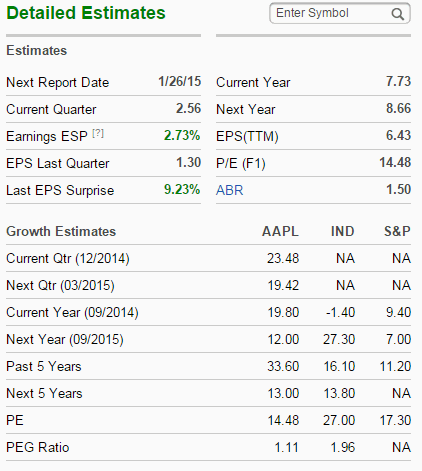Computerized Investing
Post on: 7 Август, 2015 No Comment

by Wayne A. Thorp, CFA
Investors use return on equity (ROE) to measure the earnings a company generates from its assets. With it, you can determine whether a firm is a profit-creator or a profit-burner and managements profit-generating efficiency. Why is this important to investors? Companies that are good at coaxing profits from their operations tend to have competitive advantages, which can translate into superior investment returns.
In its simplest form, return on equity is calculated as follows:
ROE = Net income average shareholders equity
Shareholders equity is also called book value, which is the difference between total assets and total liabilities.
Investors analyze the trend in ROE for individual firms and compare this to historical and industry benchmarks. A rising return on equity can signal that a company is able to grow profits without adding new equity into the business, which dilutes the ownership share of existing shareholders. The higher a companys return on equity, the better management is at employing investors capital to generate profits.
A company cannot grow earnings faster than its current ROE without raising additional cash. Companies raise cash by either selling new shares or by issuing debt. However, there are costs associated with both activities: Issuing debt leads to interest expense, which can lower net income; and selling more shares lowers earnings per share by increasing the number of outstanding shares.
However, relying on the formula above to derive return on equity tells an incomplete story about a company. For example, a company can boost its ROE by taking on additional debt. If its debt load becomes excessive, it may force the company into bankruptcy. As a result, it is a good idea to examine the drivers of ROE. In order to do that, E.I. du Pont Nemours and Company came up with a system to deconstruct ROE. Over the years, this system has become known as the DuPont model.
The DuPont Corporation created its method for analyzing return on equity in the 1920s. Today, two variants are taught in finance programsthe original three-step model and an extended five-step model.
In this installment of Spreadsheet Corner, we begin by discussing the three-step model and then expand into the five-step model. We then show how to use a spreadsheet to calculate the components of ROE.
Three-Step DuPont Model
The three-step DuPont model is calculated as follows:
ROE = Net profit margin asset turnover equity multiplier
Where:
Net profit margin = net income sales;
Asset turnover = sales average total assets; and
Equity multiplier = average total assets average shareholders equity
The three-step DuPont model, in effect, captures managements effectiveness at generating profits (net profit margin), managing assets (asset turnover) and finding an optimal amount of leverage (equity multiplier).
Ideally, we would like to see a company boosting its ROE by increasing its net margin or its asset turnover.
Net Profit Margin
The net profit margin (or net margin) of a company reflects managements pricing strategy by showing how much earnings they can generate from a single dollar of assets. Companies must be able to price their products and services in such a way as to drive volume. However, all the sales volume in the world is useless if a company cannot turn a profit. Therefore, management must price a product to be as profitable as possible while still generating stable sales growth.

Profit margins are also an expression of the amount of competition a company facesthe more competitive the industry, all else being equal, the lower the profit margins for the companies in the industry. Companies with high profit margins indicate that they have a highly proprietary product or service that carries with it a price premium. Companies in a monopolistic position or those that are part of an oligopoly (only a few main competitors) tend to have higher profit margins. In industries where there are few barriers to entry, high profit margins are quickly eroded as new competitors enter the marketplace. Companies are said to have wide moats if they are able to prevent new competition from entering or are in a position to lower their prices in response to new competition and make up for lower margins with higher volume.
In contrast, there are industries where there is little to differentiate the product of one company from another. When producing such commodity products or services, companies must compete based on price. The companies in these types of industries tend to have very low profit margins.
Net margins vary from company to company, and, historically, certain ranges can be expected across industries. Therefore, it is important to compare the ROEs and other financial ratios of companies in similar lines of business, as similar business constraints exist in each distinct industry.
Asset Turnover
Asset turnover measures how much sales a company generates from each dollar of assets. It allows us to gauge managements effectiveness at using assets to drive sales.
The majority of high-margin companies also tend to have low asset turnover. This is because a firm can only do a certain amount of business without incurring additional costs that would adversely impact profit margins. On the flip side, low-margin firms tend to have high asset turnover, as they rely on high sales volume to generate profits. By improving its asset management policies, a company can boost shareholder returns without necessarily increasing profit margins.
Equity Multiplier
The final component of the three-step DuPont Model is the equity multiplier, which is a measure of financial leverage. It helps us examine how a firm uses debt to finance its assets. A higher equity multiplier indicates higher financial leverage, which means the company is relying more on debt to finance its assets.
A company can boost its return on equity by raising its equity multiplier (increasing the amount of debt it carries). If a company is already sufficiently levered, taking on additional debt increases the risks of not being able to fulfill its obligations to creditors and going bankrupt.
Five-Step DuPont Model
The three-step DuPont Model provides us with insights as to what is driving a companys return on equity. We can see if a company is boosting its ROE by improving its profitability, by using its assets more efficiently, or by taking on additional leverage. However, companies that boost ROE by adding leverage will eventually reach a point where the cost of debt will diminish profit margins and decrease asset turnover.














